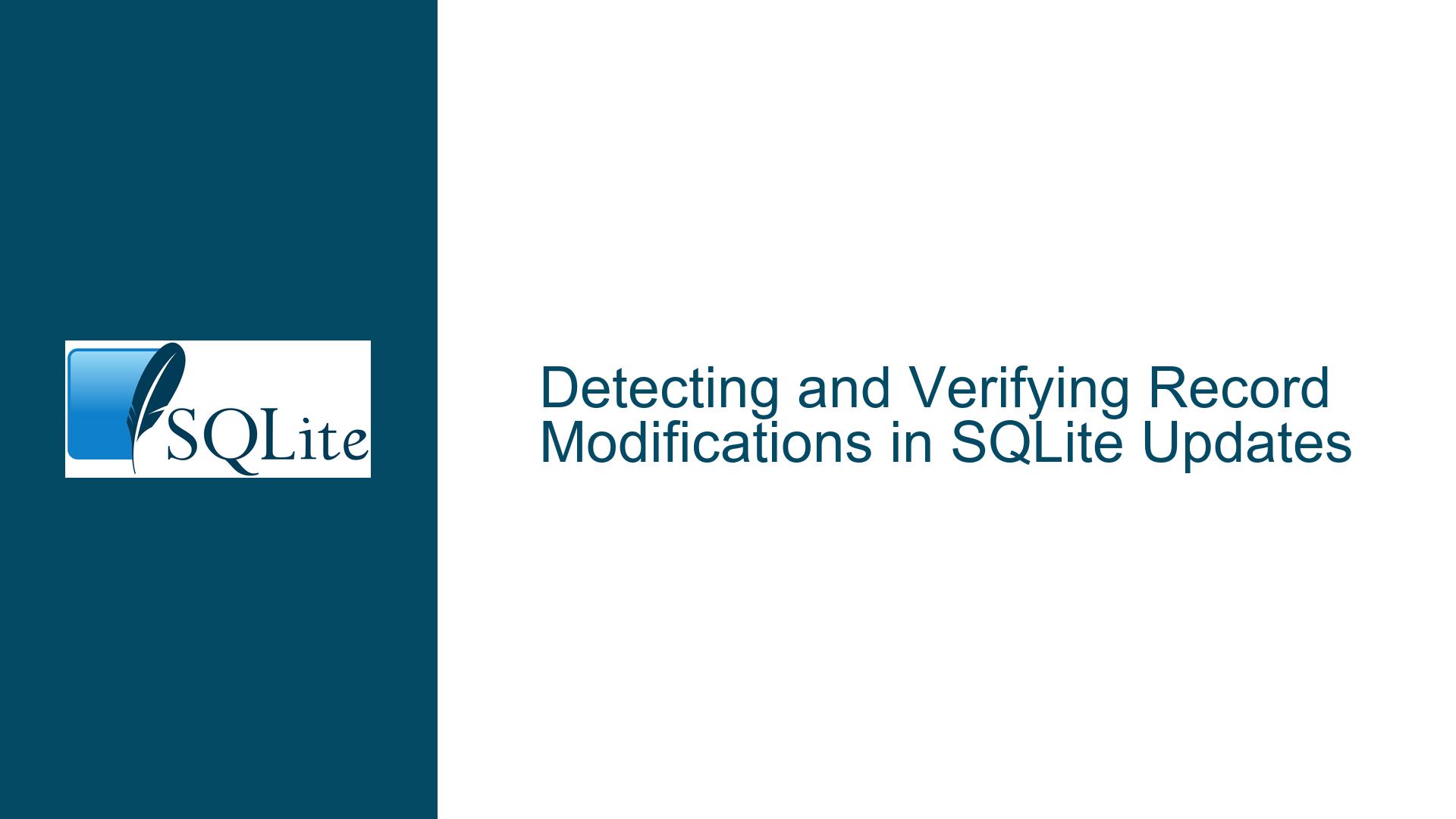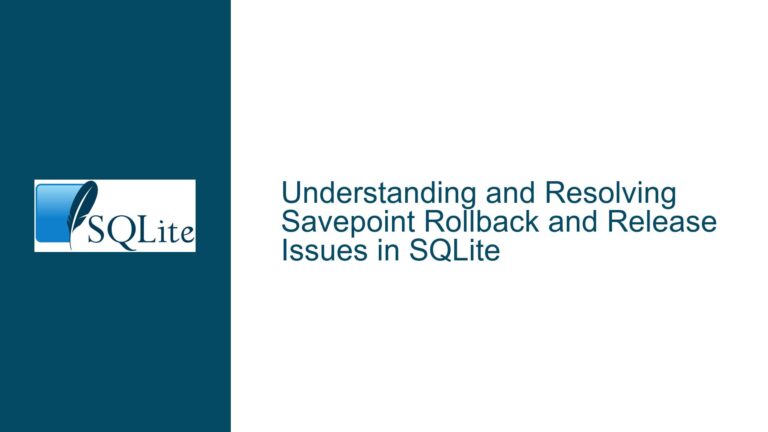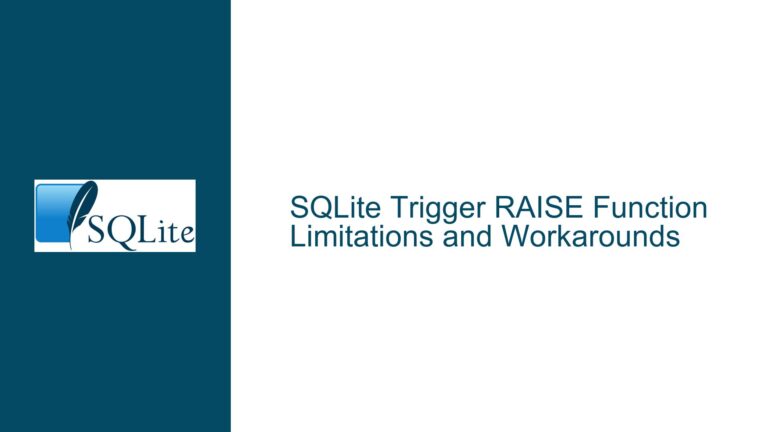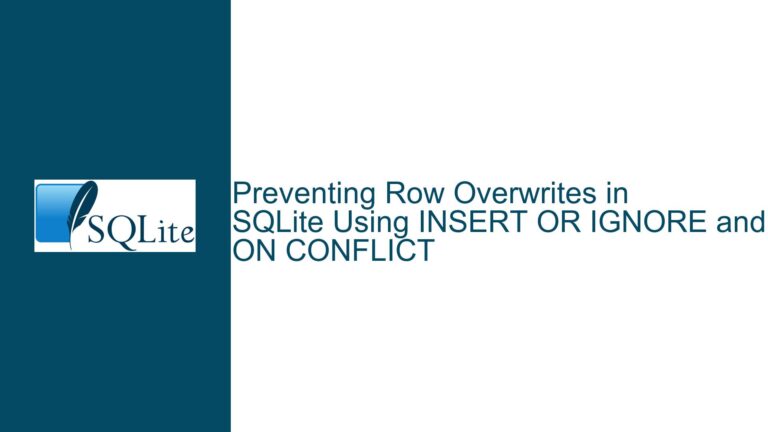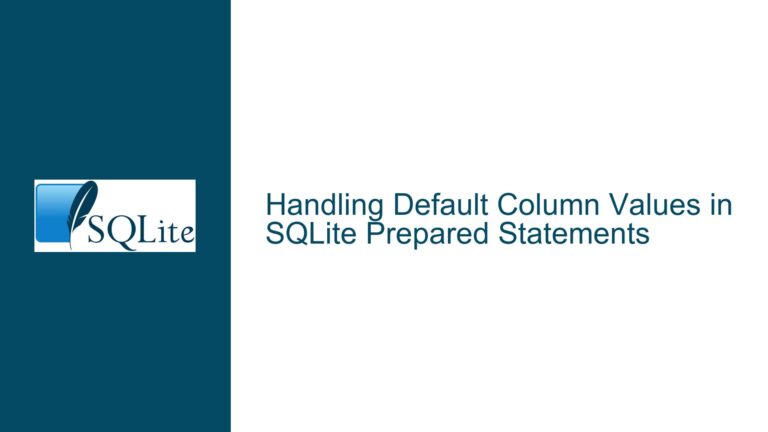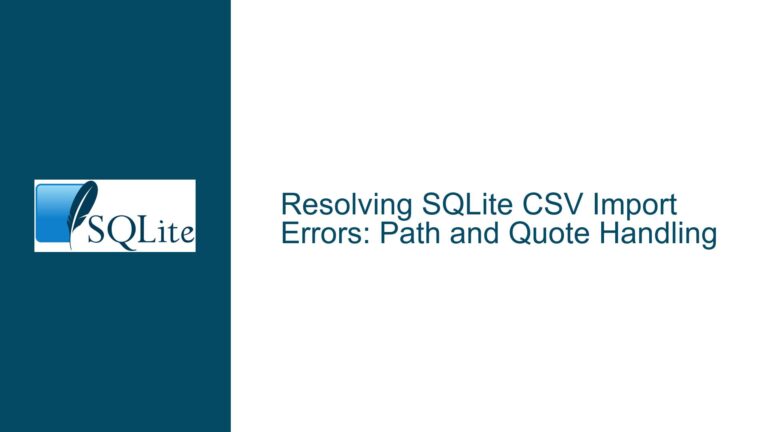Detecting and Verifying Record Modifications in SQLite Updates
SQLite Update Statements and the Challenge of Verifying Record Modifications
When working with SQLite, one of the most common operations is updating records in a table using the UPDATE statement. However, a frequent challenge arises when developers need to verify whether an UPDATE statement actually modified any records. This is particularly important in scenarios where the success of subsequent operations depends on the UPDATE having made changes to the database. The issue is compounded by the fact that sqlite3_exec()—a commonly used function to execute SQL statements—returns SQLITE_OK even if the WHERE clause of an UPDATE statement does not match any records. This behavior can lead to confusion, as the function does not differentiate between a successful update that modified records and one that did not.
The core of the problem lies in understanding how SQLite handles UPDATE operations and how to accurately determine whether a record was modified. This is not just a matter of checking the return value of sqlite3_exec(), but also involves understanding the internal mechanisms of SQLite, such as how it counts changes, how it handles triggers, and how it manages transactions. The challenge is further complicated by the fact that SQLite does not provide a direct way to determine whether an UPDATE statement will modify a record before executing it. Instead, developers must rely on a combination of SQL functions, careful query design, and sometimes even additional queries to achieve this goal.
The Behavior of sqlite3_changes() and the Concept of "Affected" vs. "Changed" Rows
One of the key functions in SQLite for determining the impact of an UPDATE statement is sqlite3_changes(). This function returns the number of rows that were "affected" by the most recent INSERT, UPDATE, or DELETE operation on the database connection. However, it is crucial to understand the distinction between "affected" and "changed" rows. A row is considered "affected" if it matches the WHERE clause of the UPDATE statement, regardless of whether the values in the row were actually modified. This means that if an UPDATE statement sets a column to a value that it already contains, the row is still counted as "affected" by sqlite3_changes().
For example, consider a table t with a column a containing the value 5. If you execute the statement UPDATE t SET a = 5 WHERE a = 5;, sqlite3_changes() will return 1, even though the value of a did not change. This behavior can be counterintuitive, especially for developers who expect sqlite3_changes() to only count rows where the values were actually modified. The reason for this behavior is rooted in SQLite’s internal implementation of the UPDATE operation. SQLite does not compare the old and new values of each column before performing the update; instead, it simply applies the new values to all rows that match the WHERE clause. This approach is more efficient, as it avoids the overhead of comparing values, but it can lead to unexpected results when using sqlite3_changes().
Another important consideration is the behavior of triggers. If an UPDATE statement causes a trigger to fire, the rows processed by the trigger are also counted as "affected" by sqlite3_changes(). This means that even if the UPDATE statement itself does not modify any rows, the trigger might, and sqlite3_changes() will reflect this. This behavior can further complicate the task of determining whether an UPDATE statement actually modified any records.
Strategies for Verifying Record Modifications and Optimizing Update Operations
Given the challenges outlined above, developers need to adopt strategies to accurately verify whether an UPDATE statement has modified records and to optimize their update operations. One common approach is to use a combination of SELECT and UPDATE statements to first check whether any rows will be modified and then perform the update if necessary. For example, you can execute a SELECT statement with the same WHERE clause as the UPDATE statement to determine whether any rows match the criteria. If the SELECT statement returns any rows, you can then proceed with the UPDATE.
Another approach is to use the sqlite3_changes() function in conjunction with careful query design. For example, you can structure your UPDATE statement to only modify rows where a change is actually needed. Consider the following example:
UPDATE t SET x = 5 WHERE id = 47 AND x IS NOT 5;
In this case, the UPDATE statement will only modify rows where the value of x is not already 5. This approach ensures that sqlite3_changes() will only return a positive value if the UPDATE statement actually modified a record. However, it is important to note that this approach does not guarantee that the UPDATE statement will modify any records, as it is still possible that no rows match the WHERE clause.
For more complex scenarios, you can use transactions to ensure that your UPDATE operations are atomic and that you can roll back changes if necessary. For example, you can execute a series of INSERT, UPDATE, and DELETE statements within a transaction and use sqlite3_changes() to determine whether each operation was successful. If any operation fails, you can roll back the entire transaction to ensure that the database remains in a consistent state.
Finally, it is worth noting that SQLite provides other functions that can be useful for tracking changes to the database. For example, sqlite3_total_changes() returns the total number of rows that have been modified, inserted, or deleted since the database connection was opened. This function can be useful for tracking changes over time, but it does not provide the same level of granularity as sqlite3_changes().
In conclusion, verifying whether an UPDATE statement has modified records in SQLite requires a combination of careful query design, the use of SQL functions like sqlite3_changes(), and an understanding of SQLite’s internal behavior. By adopting these strategies, developers can ensure that their update operations are both efficient and accurate, and that they can reliably determine whether records have been modified.
